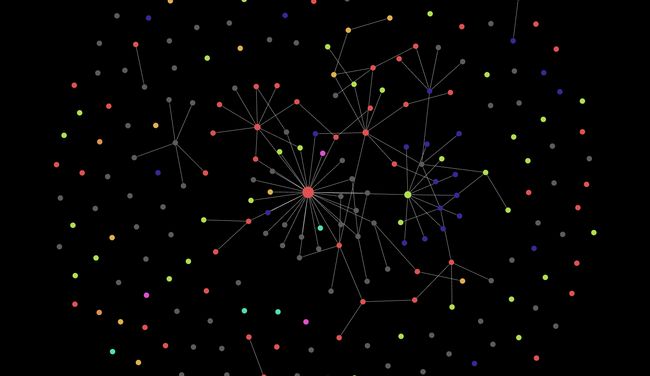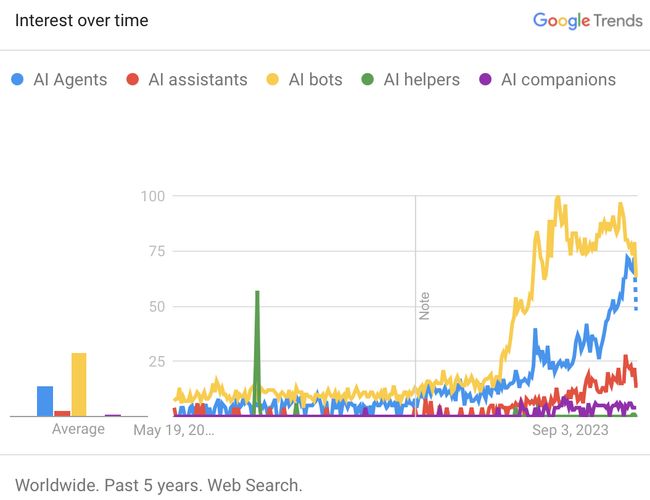Mind Mapping and A.I.
A look at what's on my mind as a map with A.I.
This week we take a look at what’s on my mind as a map.
Housekeeping
🗓️ This week, I am headed to Dell Technologies World in Las Vegas. If you’ll be in Las Vegas too, let’s meet at Elevate Technology User Group. Register now: https://bit.ly/etug-at-dtw-2024 🎫 🎟️
Looking ahead
🗓️ Next month, I am honored to be a Tech Field Day delegate at Qlik Connect in Orlando.
🗓️ Want to combine forces or see your event listed here? Let’s chat!
More content in more places
🆕 I’m experimenting with LinkedIn Company page posts for Cuthrell Consulting. Yes, the SVG generation of the Open Graph image isn’t quite perfect yet but I’ll get there. 🤣
🏦 🎙️ 🎧 Reminder: My appearance on Fred Cadena’s Banking on Disruption podcast will dive into SXSW 2024 findings, FinTech, and much more.
🦄 🏇 🎙️ 🎧 Reminder: My own Unicorn Jockeys podcast will be making use of A.I. and I’m excited to see where this all goes.
Now, back to our regularly scheduled Fudge Sunday newsletter! 🤓
Getting Informed
A mind map is a visual from the practice of mind mapping. Modern mind mapping software has become popular enough to warrant being a common feature or visualization in most modern SaaS collaboration tools.
Typically, the mind map begins with a specific subject or primary topic. From there, the topic can branch into subtopics and continue to subtopics of subtopics. For example, using markdown and 11ty can create a mind map. Or, you can draw from seemingly myriad options in the digital drawing board space.
But what about seeing relationships between mind maps or many different topics? Let’s dig in a bit.
Mapping Obsidian Mind Maps
Fudge Sunday readers may recall past updates on my use of Obsidian as part of my Zettelkasten. As my tastes in tools can be fickle, I am happy to share that my Obsidian vaults have only continued to expand since 2021.
To see how the mind map started and evolved, I created an animated Obsidian graph timelapse video.
https://www.youtube.com/watch?v=pNfQ4XMQd5c
Of course, this gets me thinking about more topics that fill my Obsidian vault.
Knowledge Graph Momentum
To be clear, the term “personal knowledge graphs”, or PKGs, is not new or that recent or waiting to become a book. However, the recent democratized ability to enrich or drive updates to knowledge management systems using a variety of GenAI tools is interesting to ponder.
Even the notion of a “knowledge graph” is trending depending on your source. For example, Google Trends seems to indicate rising interest in “knowledge graph” topics.
One could argue that the term “knowledge graph” is at least a teenager by now. We can thank Google for embedding the experience of a “knowledge graph” into everyday interweb browsing on various Google properties.
These days, there is also The Knowledge Graph Conference which started in 2019. As of May 2024 there are several references to GenAI and periodic updates to The Knowledge Graph Conference YouTube Channel.
As you might expect, companies will seek to differentiate and establish a niche or create the beginnings of a moat for a unique variety of “knowledge graph”. Most recently, RelationalAI has started prepending the term “relational” (i.e. “relational knowledge graphs”) and this trend will likely expand to other A.I. companies.
While the Fudge Sunday newsletter itself is not produced by A.I., my research toolchain has started to make use of many different GenAI tools. For example, check out this well-constructed brief from theCUBE AI using the prompt “What can you tell me about knowledge graphs?” that also includes sources such as video clips and related video clips. Pretty clever!
There are more references to “vector databases” appearing now as well. For a quick read on this topic, check out Vector Databases vs. Knowledge Graphs: Choosing the Right Foundation for RAG by Harsha Srivatsa.
Rise of Benevolent A.I. Agents
Source: Google Trends
If you consider a recent post from Insight Partners, there is a growing number of so-called “A.I. agents” or “A.I. assistants” vying for market attention. (Thanks to Praveen Akkiraju for the repost)
The premise and promise of A.I. agents are to harness the technologies of personal knowledge graphs, vector databases, synthetic data (i.e. noise, GANs), and GenAI to provide humans (and other A.I. agents) with API-accessible applications that provide high-utility value. In effect, these are the agents of human-machine partnerships.
Feeding the Machine
While catching up with my peers on the deep web, I had an epiphany of sorts. I believe the pursuit of cheap and easy human output is exhausting (relatively) quickly which is why synthetic data is gaining interest.
A noise-infused, sentiment random-walk transformed, and GAN-targeted corpus of past human outputs can be generated far more rapidly than waiting for us slow humans to do the work for training against scenarios that do not exist yet and those scenarios that may never exist. After all, my ~1000 words per week can feed only so many hungry A.I. model mouths. 🤓
On a lighter note, I noted the similarities between Google Gemini and Luma logos. I just learned that many others have noticed the proliferation of ✨ ❇️ ✧ ✦ emoji. (Thanks to Ben Cohen for my TIL moment)
https://www.youtube.com/watch?v=g-pG79LOtMw
Lastly, logo dramas aside, I’m still an A.I. technology optimist. That said, I’m also making sure I promote and donate to folks who are keeping watch and making impact on the future of A.I. like Dr. Joy Buolamwini and The Algorithmic Justice League.
What’s the next big thing going to be in personal knowledge graphs, vector databases, and benevolent high-utility value A.I. agents?
Until then… place your bets.
Disclosure
I am linking to my disclosure.
p.s. As I’ve gotten older, I have come to appreciate getting snail mail. If you have time to drop me a postcard, I’m going to be scanning the picture side of the postcards I’ve received and link to a Fudge Sunday Reader Postcards gallery (with suitable redactions and filtering for greater anonymity) as a newsletter trailer of sorts. Stay tuned! ✉️
p.p.s. Thank you to Jacob Molz for noticing my missing paragraphs in the newsletter. ✅
Subscribe to Hot Fudge Daily
Get the latest articles and updates delivered straight to your inbox.

